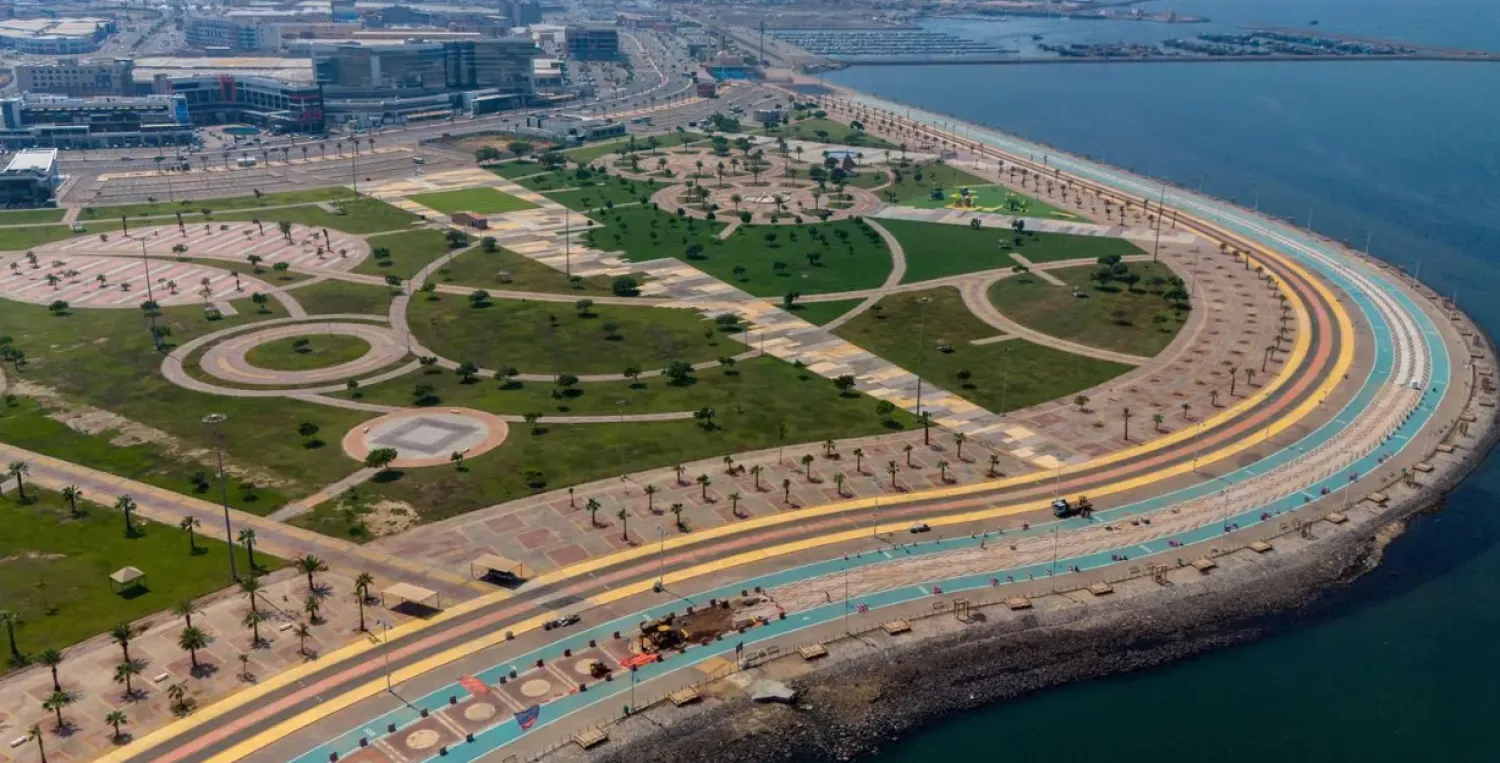It's been more than a year since Yem Srey Pin moved with her family from the village where she was born on Cambodia's Angkor UNESCO World Heritage site to Run Ta Ek, a dusty new settlement about 25 kilometers (15 miles) away.
A tattered Cambodian flag flaps gently in the scorching midday sun on her corner lot, its depiction of the Angkor Wat temple barely still visible, while her brother scoops water from a clay cistern onto a neighbor's cow that he tends during the day.
Hers is one of about 5,000 families relocated from the sprawling archaeological site, one of Southeast Asia’s top tourist draws, by Cambodian authorities in an ongoing program that Amnesty International has condemned as a “gross violation of international human rights law.” Another 5,000 families are still due to be moved.
The allegations have drawn strong expressions of concern from UNESCO and a spirited rebuttal from Cambodian authorities, who say they're doing nothing more than protecting the heritage land from illegal squatters, The Associated Press reported.
Yem Srey Pin's single-room home, its reused corrugated steel siding perforated by rust and old nail holes, is a far cry better than the makeshift tent she lived in with her husband and five children when they first arrived, which did little to protect from the monsoon rains and blew down in the winds.
And their 600-square-meter (6,500-square-foot) property is significantly bigger than the 90-square-meter (1,000-square-foot) plot they occupied illegally in the village of Khvean on the Angkor site.
But the 35-year-old is also in debt from building the new house. Her husband finds less construction work nearby and his wages are lower, and there are no wild fruits or vegetables she can forage, nor rice paddies where she can collect crabs to sell at her mother's stand.
“After more than a year here I haven't been able to save any money and I haven't earned anything,” she said, as her 12-year-old son rocked her 8-month-old daughter in a hammock in front of a fan to take the edge off midday heat nearing 40 degrees Celsius (topping 100 degrees Fahrenheit).
“Living here is just hand to mouth because the income we do have goes to pay for the rice, food and my children's school.”
The Angkor site is one of the largest archaeological sites in the world, spread across some 400 square kilometers (155 square miles) in northwestern Cambodia. It contains the ruins of Khmer Empire capitals from the 9th to 15th centuries, including the temple of Angkor Wat, featured on several Cambodian banknotes, such as the 2,000 riel note depicting rice farmers working fields around the temple, as well as the country's flag.
UNESCO calls it one of the most important archaeological sites in Southeast Asia, and it is critical to Cambodia’s tourism industry.
When it was inscribed as a World Heritage Site in 1992, it was named a “living heritage site” whose local population observed ancestral traditions and cultural practices that have disappeared elsewhere.
Still, UNESCO at the time noted that Angkor was under “dual pressures” from some 100,000 inhabitants in 112 historic settlements who “constantly try to expand their dwelling areas,” and from encroachment from the nearby town of Siem Reap.
Cambodia's answer was a plan to entice the 10,000 families illegally squatting in the area to resettle at Run Ta Ek and another site, as well as to encourage some from the 112 historic settlements to relocate as their families grow in size.
“People got married, they had children, so the number of people were on the rise, including those coming illegally,” said Long Kosal, deputy director general and spokesperson for the Cambodian agency known as APSARA that's responsible for managing the Angkor site.
“What we did was that we provided an option.”
Cambodia began moving people to Run Ta Ek in 2022, giving those who volunteered to leave their homes in the Angkor area plots of land, a two-month supply of canned food and rice, a tarp and 30 sheets of corrugated metal to use to build a home. Benefits also included a Poor Card, essentially a state welfare program giving them around 310,000 riel (about $75) monthly for 10 years.
In a November report, Amnesty questioned how voluntary the relocations actually were, saying many people they interviewed were threatened or coerced into moving and that the relocations were more “forced evictions in disguise.”
The rights group cited a speech from former Prime Minister Hun Sen in which he said people “must either leave the Angkor site soon and receive some form of compensation or be evicted at a later time and receive nothing.”
Amnesty also noted Hun Sen's track record, saying that under his long-time rule Cambodian authorities had been responsible for several forced evictions elsewhere that it alleged “constituted gross violations of human rights.” It said Run Ta Ek — with dirt roads, insufficient drainage, poor sanitation and other issues — did not fulfil international obligations under human rights treaties to provide people adequate housing.
That has now changed: Homes with outhouses have been built, roads paved, and sewers installed. Primitive hand pumps made of blue PVC piping provide water, and electricity has been run in.
There's a school, a health center, a temple; bus routes were added, and a market area was built but is not yet operating, Long Kosal said, according to AP.
Hun Sen's successor, his son Hun Manet, traveled to Run Ta Ek in December to meet with residents and highlight infrastructure improvements in an attempt to allay the growing international concerns surrounding Cambodia's most important tourist site.
He reiterated his father's contention that if the squatters are not removed, the site risks being delisted by UNESCO — something UNESCO has never threatened.
Amnesty itself concedes life has gotten better for the residents of Run Ta Ek, but maintains there are major concerns.
Families have had to take on heavy debt to build even their basic houses, there is little work to be found, and the village — without any significant tree cover — is swelteringly hot during the day and has little shelter from winds or monsoon rains, said Montse Ferrer, the head of Amnesty’s research team investigating the Angkor Wat resettlements.
“People no longer have income,” she said in an interview in Geneva. “They had a clear source of income at the time — tourism — but also other sources of income linked to the location at Angkor. They are now at least 30 minutes away from the site and can no longer access these sources.”
Following Amnesty's scathing report, UNESCO moved up the timeline for Cambodia's submission of its own report on the state of conservation at the Angkor site, specifically asking for the allegations to be addressed.
In that report, submitted to UNESCO in March, Cambodia said it had not violated any international laws with the relocations, saying it was only moving people involved in the “illegal occupation of heritage land” and that in Run Ta Ek many were now property owners for the first time in their lives.
UNESCO said it would not comment on the situation until it has been able to analyze Cambodia's response, but referred The Associated Press to previous comments from Lazare Eloundou Assomo, director of the UNESCO World Heritage Center.
Speaking after Amnesty released its report, he stressed the agency had “always categorically rejected the use of forced evictions as a tool for management of World Heritage listed sites.”
“Since the Cambodian authorities announced their population relocation program in 2022, UNESCO has repeatedly and publicly recalled the importance of full respect for human rights,” he said.
Ferrer said Cambodia's response avoids addressing many of the issues raised by Amnesty, and that UNESCO — even though it says it has little ability to change national policies — has not yet used the significant leverage it does have.
“They could decide that the site is in danger, which they haven't. They can advise the World Heritage Committee, which is the ultimate body that can decide to take specific action against the state of Cambodia,” she said. “It can also conduct its own investigation and make public recommendations about what the state can be doing.”
Run Ta Ek resident Chhem Hay decided in June to take the opportunity to move from the village where she'd lived since she was a young teenager to the new settlement, enticed by the prospect of owning her own land, and a larger property than she'd ever had.
Her situation has improved since the austere early days living with her husband and teenage daughter in a tent on a dirt lot surviving on rice and prahok — a fermented fish paste that is an inexpensive staple for many Cambodians — paid for by charity handouts from Buddhist monks.
“I didn't dare eat anything much,” she said. “I tried to save money to buy bricks and sand.”
She was able to get a bank loan for $1,000 for the materials for a house, and now lives in a single-room brick structure built by her construction-worker husband and other family.
The income from the government Poor Card is enough for the monthly payments on the high-interest 2-year loan, which will have cost her almost double the principle when it's paid off. She has four chickens and some newly hatched chicks, though had to kill six others to feed the men building her house.
But the 37-year-old lost her work as a garbage collector in her village, and her husband has to drive in to Siem Reap for construction work, setting out at 5 a.m. to make it on time and spending about a third of his 35,000 riel ($8.70) daily income on gas for his motorbike.
She's looking forward to the day when the village market is opened, and hopes the government will establish a factory or similar business that will provide jobs.
“I don't know what will happen at the moment,” she said, standing in her doorway. “I'm just living day by day.”
For residents like Chhem Hay, Cambodia plans to offer vocational training, but does not envision further financial compensation, Long Kosal said.
“Once you have education, once you have a vocational skill, you can find a job easily,” he said. “Where you just remain there waiting for support, then you're not going to go anywhere. You're not going to make it.”
Meanwhile, villagers say many have already given up on Run Ta Ek, putting padlocks on their new homes and moving away — presumably back closer to Siem Reap and the Angkor site where it is easier to make a living.
Yem Srey Pin said even though Run Ta Ek has slowly improved since she arrived in February 2023, and her new home will be paid off fairly soon, she'd rather return to her village if it were possible.
But the village of Khvean is already slowly being reclaimed by the jungle, with grass growing through the foundations of houses, all that remains of the former homes. A hair curler, tattered blue playing cards and a trampled baseball cap lying on the ground are among the last vestiges of the lives left behind.
With almost all of the village's 400 families moving out, aside from a few who work at a neighboring military facility, Yem Srey Pin says there's nothing left for her there, even if APSARA would let her return.
“I can't live in my old village alone,” she said.
Cambodia's Relocation of People from UNESCO Site Raises Concerns

A view of Bayon temple at Angkor Wat temple complex in Siem Reap province, Cambodia, Tuesday, April 2, 2024. (AP Photo/Heng Sinith)

Cambodia's Relocation of People from UNESCO Site Raises Concerns

A view of Bayon temple at Angkor Wat temple complex in Siem Reap province, Cambodia, Tuesday, April 2, 2024. (AP Photo/Heng Sinith)
لم تشترك بعد
انشئ حساباً خاصاً بك لتحصل على أخبار مخصصة لك ولتتمتع بخاصية حفظ المقالات وتتلقى نشراتنا البريدية المتنوعة







